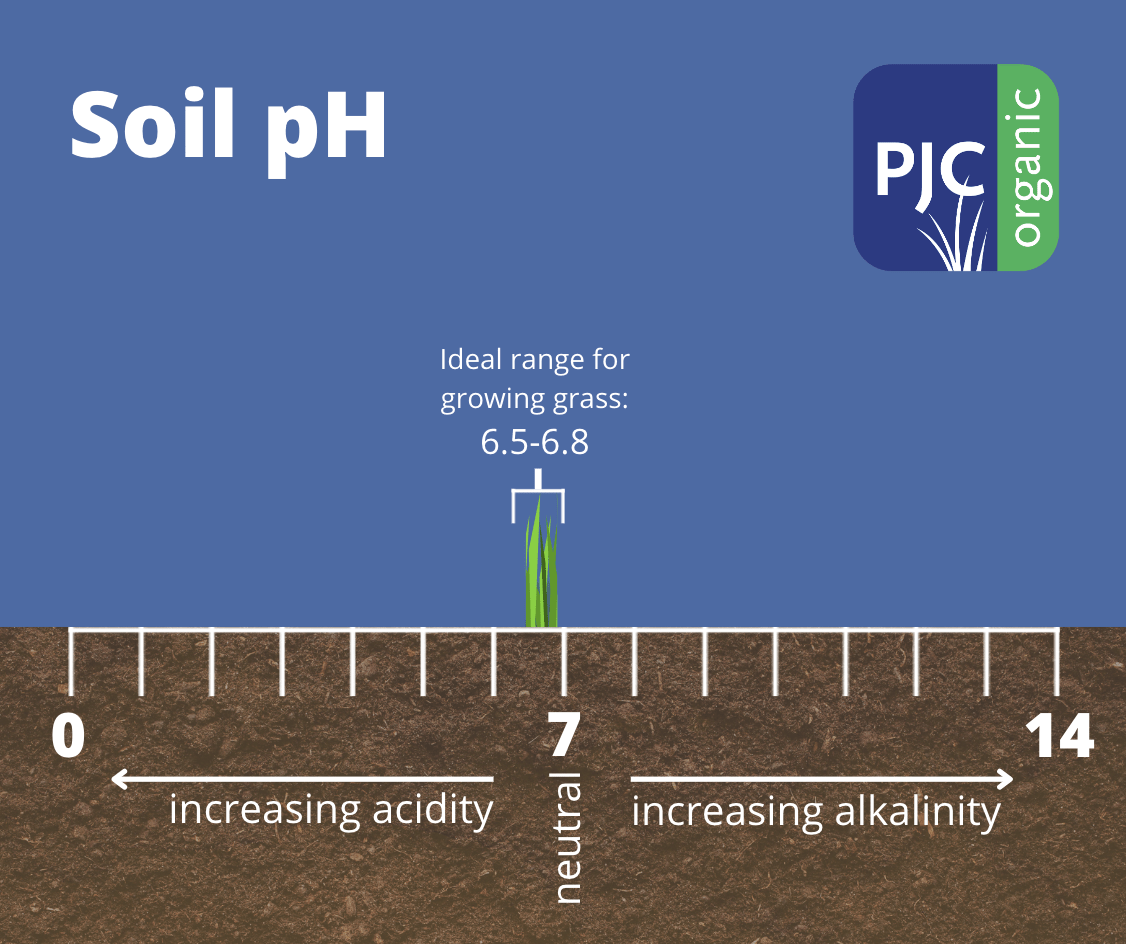Introduction
Healthy turf starts from the ground up, and that means paying attention to your soil’s pH. Liming your lawn isn’t just a fall maintenance task; it’s one of the most important steps you can take to create thriving, resilient grass. By applying lime at the right time and rate, you balance soil acidity, unlock essential nutrients, and strengthen the soil biology that supports long-term turf health. Whether you manage lawns, sports fields, school grounds, or municipal landscapes, understanding why and when to lime your lawn can make all the difference in the success o
1. Improve Soil Chemistry
Soil pH ranges from 0 (very acidic) to 14 (very alkaline), with 7 being neutral. Soils in the Northeast often lean acidic; turf grass prefers a pH of approximately 6.5 to 6.8 for optimal root growth and nutrient availability. Because of how pH is measured, what appears to be a small change can mean a lot: A pH of 5.0 is ten times more acidic than pH of 6.0. Accordingly, a pH of 4.0 is a hundred times more acidic than that of pH of 6.0. (Penn State Extension). By applying limestone (lime), we raise the pH and shift the soil environment into a more favorable range for turf nutrients.

2. Encourage Soil Biology
 Soil microbes, beneficial bacteria and fungi, and earthworms all thrive when the pH is near neutral. In more acidic soils, fungal activity dominates and beneficial microbial balance is disrupted. Earthworms in particular prefer pH levels closer to neutral, which helps them burrow, form soil aggregates, and improve structure through their mucous secretion.
Soil microbes, beneficial bacteria and fungi, and earthworms all thrive when the pH is near neutral. In more acidic soils, fungal activity dominates and beneficial microbial balance is disrupted. Earthworms in particular prefer pH levels closer to neutral, which helps them burrow, form soil aggregates, and improve structure through their mucous secretion.
3. Improve Soil Structure
Beyond pH adjustment, lime—especially when it contributes calcium (and sometimes magnesium)—helps stabilize soil aggregates. This improves pore space (tilth), aids drainage, and gives roots better access to oxygen and water. What this means in practice: when the soil is properly limed, turf roots aren’t just shallow and stressed — they can develop deeper and more resilient.
Lime Application: What You Need to Know
How Much to Apply
Often, not enough lime is applied to make a meaningful change in soil chemistry. A soil test is key. A soil test should measure pH, buffer pH (which indicates how resistant your soil is to change), and calcium/magnesium ratios. For example, two soils both reading pH 6.2 might require vastly different lime rates depending on their buffer pH: one might need about 46 lbs per 1,000 sf, the other 138 lbs.
Type of Lime
The decision on which lime to use, calcitic or dolomitic, should be based on the Calcium to Magnesium ratio found on the soil test (ideal Ca:Mg range is 7:1 – 15:1).
- Calcitic lime is primarily calcium carbonate.
- Dolomitic lime includes both calcium and magnesium carbonate.
Use dolomitic only if your soil test shows a magnesium deficiency (goal Ca:Mg ratio ~ 7:1 to 15:1).
Calcium remains the most important nutrient for turf health. Calcium strengthens plant structure, supports nutrient uptake, improves disease resistance, and enhances soil structure.
Because labor costs can be high for applying large quantities of conventional lime, high-efficiency lime products with added humate (requiring perhaps 1/5 the amount) are an attractive choice despite higher per-unit cost.
When to Apply
- Lime can be applied at any time except during extreme heat or after the ground has frozen.
- Because lime takes time (often up to six months) to fully alter soil chemistry, fall applications are ideal to prepare for the next growing season.
- Always be mindful of other plants sharing the space (such as oak or pine trees) which may prefer a lower pH; liming for turf should not come at the expense of tree health.
Final Thoughts
At PJC Organic, we know that healthy lawns begin with healthy soil. Liming isn’t just a seasonal chore; it’s a cornerstone of soil health management that sets your turf up for lasting success. By adjusting soil pH, you create the right environment for nutrients, microbes, and roots to work together in balance. If you’re unsure when or how much lime to apply, start with a soil test and a tailored plan. Our team can help you interpret results and recommend the best lime products and application timing for your site. With the right approach, your lawn will be greener, stronger, and naturally more resilient.
Check out our product page or reach out for more info!
